The Paonia Tree Board has organized two Sick Tree Days, 2020 and 2021. The 2022 event will take place near the third weekend in June with a sign-up sheet in town hall. We recruit a CSU tree expert, an entomologist (bug guy) and several experienced Master Gardeners to make house calls to look at ailing plants. To get a house call visit, see the events page.
Lessons Learned for all of us:
There are some patterns and recurring problems that are worth knowing about:
• Watering too close to the trunk. As the tree grows, the water gathering roots grow outwards. Water deeply at or beyond the outer edge of the branch tips, the dripline. How often and how long? Use a long screwdriver or any metal rod to measure soil moisture. If the probe slides into the soil easily and comes out with a muddy film on it, the soil is wet. slides easily, no muddy film, medium. If it is hard to push into the soil, the soil is dry. Water to 12″ deep. Beyond that, there are few roots in our type of soil.
• Water in winter, about once a month. Many trees are dying because we had a fall freeze, dry winter, and spring freeze, on top of a drought year. More than a tree can bear.
Right: Lack of water under the sidewalk and median strip. ————>
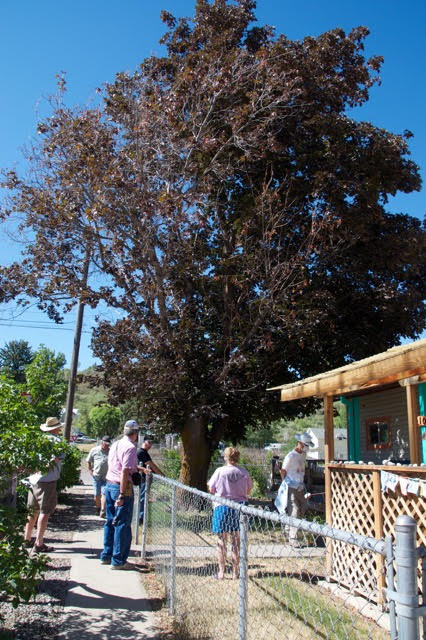

A team of experienced ag people from CSU Master Gardener program, extension service, and/or Colorado Forestry Service visit sites to analyze tree problems and make recommendations.
<——– Left: Pruning to reduce borer damage and infestation. No other practical choice. Many branches are still productive, so cut out diseased branches and enjoy cherries until there are no more. It doesn’t look very nice but tastes great.
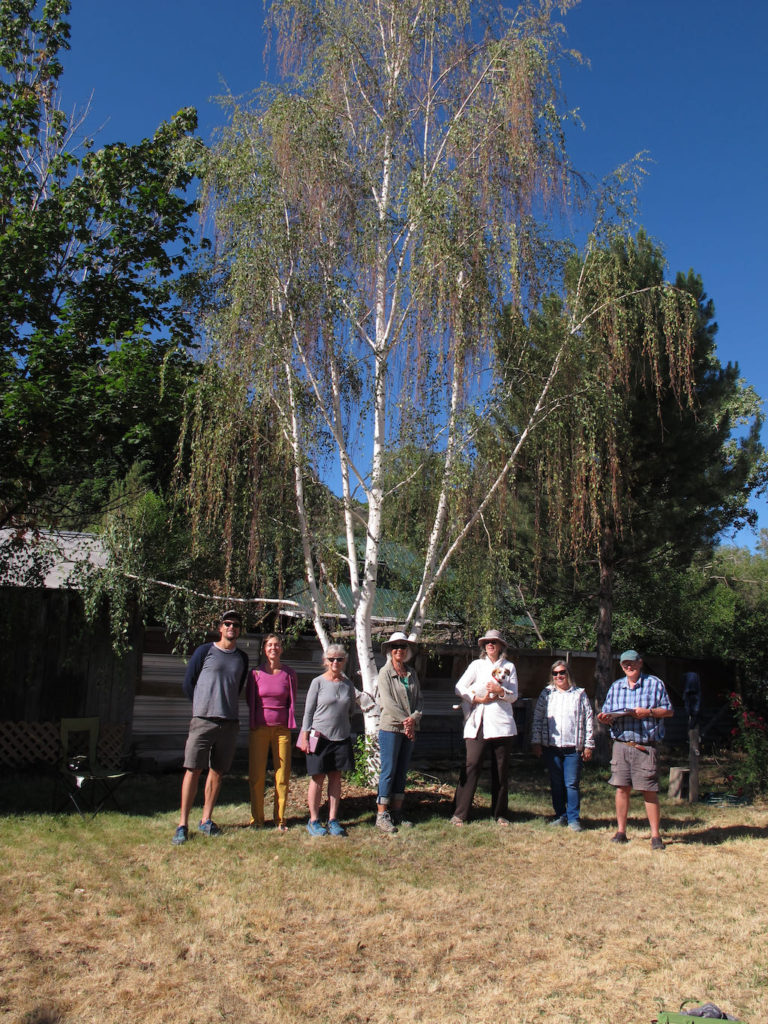
<——- (2021) Paonia Tree Board, Master Gardeners, Susan Carter (CSU extension tree expert, second from right). Taking photo was Jim Leser, retired entymologist (insect PhD) from Cedaredge board. Our special thanks to Susan and Jim.
A young pear tree with pear slugs (sawfly maggots). It will survive. ———>
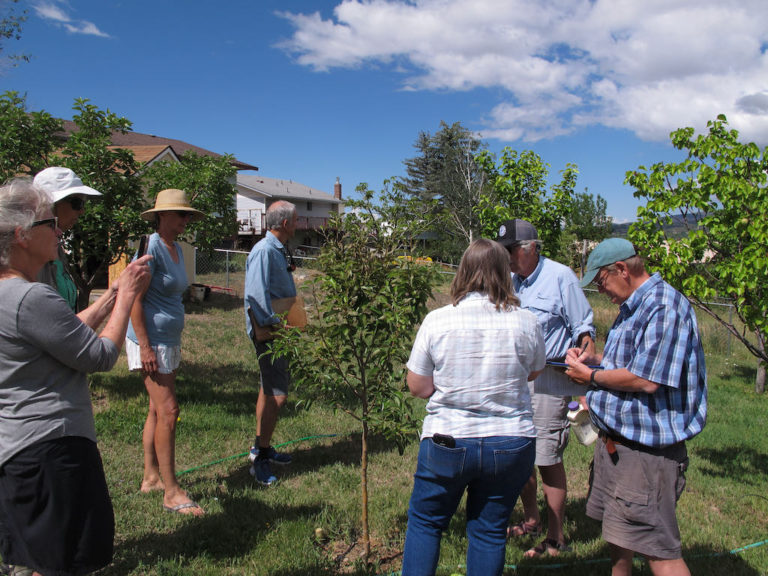

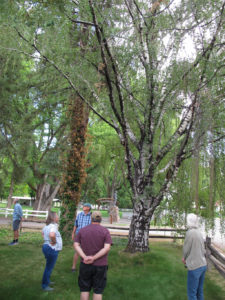
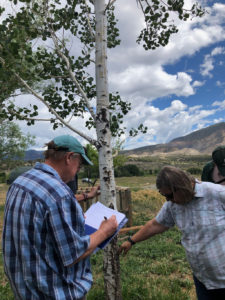
Looking into a tree problem, trees that just need more water, and an aspen with cytospora fungus, the eventual fate of most aspens at our altititude.

